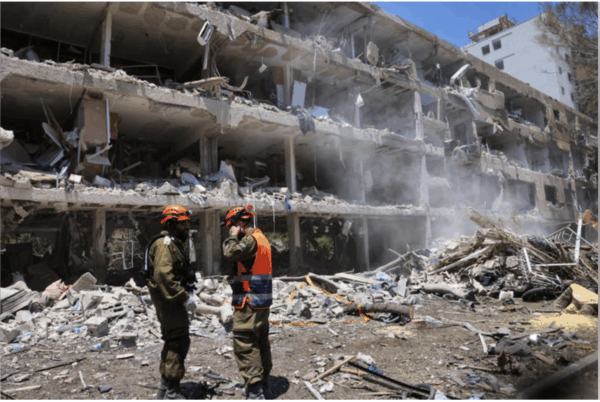Beyond the tactical lessons that the war schools from Saint-Cyr to West Point may draw, the lightning conflict of June 2025 between Israel and Iran reveals a strategic reality of a different kind: modern warfare is won – or lost – on the financial front as well. For twelve days, two powers with weakened economies clashed in a logic of costly, if not absurd, mutual destruction. And while Israeli air superiority was never in question, Iran’s ability to strike at the heart of the enemy’s territory shifted the focus of this war towards a new reality: that of a budgetary resilience put to the test.
Israel, accustomed to rapid and surgical military campaigns, discovered the cost of a long-range war. According to reserve general Re’em Aminach, former financial advisor to the Israeli military headquarters, military expenses alone reached $1.45 billion in the first two days. On a daily basis, $725 million went up in smoke between reserve mobilization, missile interceptions, and targeted strikes. The total cost of the conflict, estimated by Finance Minister Bezalel Smotrich at $12 billion, could nevertheless be lower according to Central Bank Governor Amir Yaron, who puts forward a more cautious figure of around $6 billion.
In addition to these colossal amounts, there are direct damages: the Haifa refinery paralyzed until October, the prestigious Weizmann Institute partially destroyed, Rehovot and its southern suburbs transformed into a cratered battlefield, not to mention compensations already estimated at 10 billion shekels ($2.5 billion) by the tax administration. The overall bill, according to several internal sources, could easily exceed 40 billion shekels, or over 9.5 billion euros. An unsustainable burden for an economy whose 2025 budget deficit was already capped at 4.9% of GDP ($27.6 billion), and whose growth forecast has been revised downwards: 3.6% compared to the initial 4.3%.
On the other side, Iran pays an even heavier human and economic price. With 640 deaths – mostly civilians – and over 4,000 injured, the human cost of the conflict exceeds usual tolls. Economically, estimates range from $24 to $35 billion in direct and indirect losses, or between 6 and 9% of its GDP, according to defense analyst Andreas Krieg. The impact is twofold: nuclear facilities have been durably damaged, and oil exports – the country’s vital artery – have been affected, slowing down any prospect of recovery. Added to this are the material losses inflicted on Israel, estimated at over $3 billion according to Bloomberg, some of which in compensation to local businesses.
In this theater of censorship and misinformation where both sides claim victory, there is only one certainty: this war will have no winner on the economic front. The resilience of the peoples does not mask the collapse of budgetary balances. Mastery of airspace and ballistic precision were not enough to avoid financial embolism. More than ever, the wars of tomorrow will be judged on budget balances, sovereign credit, and the ability to restore productive investment.
Israel saw its economic fundamentals falter, despite its military superiority. Iran, on the other hand, proved its capacity for strategic nuisance, at the cost of lasting structural weakening. While the cannons have fallen silent, the accounts continue to count the billions. The finance war is only just beginning.


